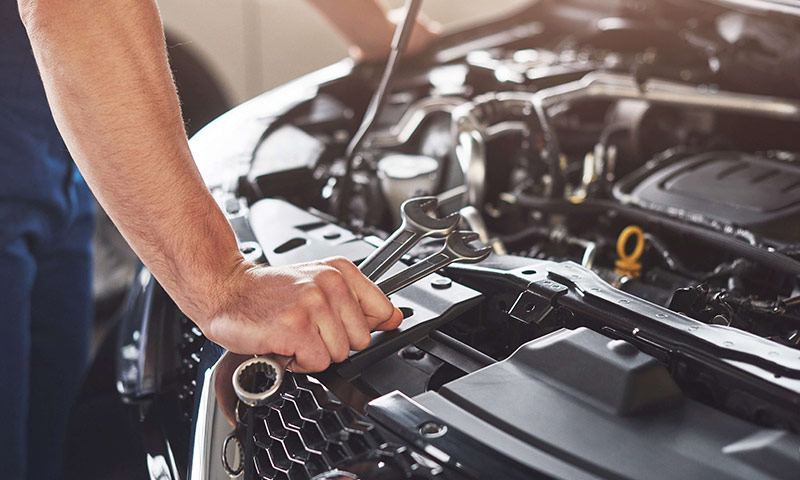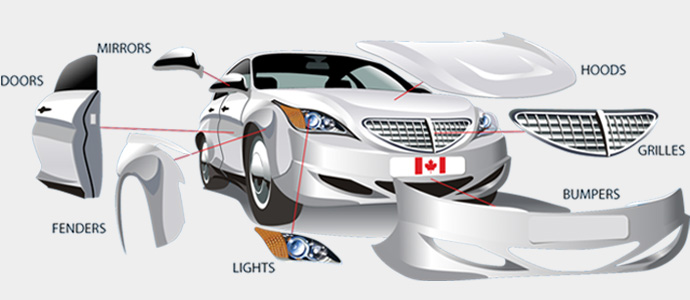When you purchase car parts, warranties and returns policies are vital to protecting your investment and ensuring your peace of mind. Here are 10 things you must keep in mind together with their pros and cons.
1. Be aware of the warranty terms
It's crucial to study the warranty contract to ensure that you understand the terms of the agreement (e.g. premature failures or manufacturing defects) and for what time.
Cons: Does not provide a comprehensive overview of the available protection.
Cons: Some warranty policies do not cover certain damages, such as normal wear and tear, incorrect installation, or even abuse.
2. What is the Warranty Period?
Check for reasonable warranty coverage timeframes.
Advantages: Longer warranties usually indicate higher-quality parts.
Cons: Extended warranty may make the part more expensive.
3. Verify transferability of warranty
Tips: Prior to selling your car, be sure your warranty is transferred to the buyer.
Advantages: Transferable warrantees can add value to the resale your car.
Cons: A lot of warranties do not permit transfers, which decreases their value over time.
4. The Return Window
Tips: Be sure to are aware of the time required to return a defective part or one that's incompatible.
Pros An extended return window provides greater flexibility.
Cons: The short return time could be frustrating when problems occur in the near future.
5. Establish Return Policy Conditions
Tips: Make sure you review the return conditions before returning the item. They could be in a resalable condition, original packing or a charge.
Understanding the terms and conditions will help you to avoid spending cash on parts that are not returnable.
Cons Refund policies that are too rigid can hinder the return of parts, even when they are faulty.
6. Exchange policies are readily available.
Choose vendors who provide exchanges in lieu of return for defective or incorrect parts.
Advantages: Exchange policies could help save time when the replacement part is required in a hurry.
Cons: Some suppliers may not allow exchanges for components that are made specifically or ordered.
7. Receive reimbursement for your work costs
Tips. Some warranties may cover labor expenses for defective parts, if they are installed by certified mechanics.
Cons: Lower risk of financial loss if part fails after professional installation.
Cons The issue is that labor warrantees are not common. They may be likewise restricted.
8. Be aware of the Warranty Void condition
Tip: Avoid actions which could void your warranty, like incorrect installation or the component in non-recommended use.
Advantages: Provides warranty benefits in case in need.
Cons: Not understanding these terms may result in the voiding of your warranty.
9. Prioritize Reputable Vendors
Tips: Find sellers with clear, customer-friendly warranties and return policies.
Pros: Reputable vendors tend to honour warranties and manage returns efficiently.
Cons: These sellers may have slightly higher prices.
10. Documentation should be kept
Tip: Save receipts, warranties cards, and return authorizations as evidence of purchase.
Benefits: Easy to return or claim warranty.
Cons: Lost documentation can make you ineligible for warranty coverage.
Final thoughts - Weighing the Benefits and Pros and
Positives of a good warranty and return policies
Protect against defective or incompatible parts.
Financial risk is reduced while providing peace of mind
If the parts come with warranties on labor or other conditions that could be transferred.
Cons of Warranty and Return Limitations:
Some warranties come with restrictions and exclusions.
The schedules for installation may not line up with the short return window.
Unprofessional vendor policies can make it difficult to resolve warranty or return claims.
By keeping these points in mind in addition to weighing the benefits and drawbacks, you will be able to select car parts that provide security and reliability, as well as the best shopping experience. Check out the top rezervesd dalu interneta veikals car parts par chevrolet cars for site examples including x auto parts, rezerves dalas riga, auto salvage part, bmw parts bmw, parts by vin, bmw part no, auto parts 2, bmw parts bmw, it auto parts, aut9 parts near me and more.

Top 10 Tips On Car Parts And Their Longevity.
Take into consideration the durability of parts and their maintenance requirements when purchasing them. This can affect the price and life span of your vehicle. Here are 10 suggestions with both pros and cons.
1. The Parts' Lifespan
TIP: Ensure the longevity of a piece by comparing it against the manufacturer's recommendations and user's experience.
Cons: Does not allow proactive maintenance.
Cons: Estimated lifespan can vary depending on driving behavior as well as environmental conditions and maintenance.
2. Examine for tears and wear. Resistance
Select components that have an established reputation for their long-lasting performance, particularly when it comes to high-stress parts like brakes or conveyor belts.
Pros are: It reduces the frequency of replacements and maintenance costs.
Cons: Durable parts may cost more at first.
3. Consider the Material Quality
Tips: Choose parts constructed from durable, high-quality materials such as carbon composites, stainless steel, or reinforced alloys.
Pros: Good materials last longer and can take on harsh environments.
Cons: Premium materials may raise the cost of the part.
4. Find components with properties that resist corrosion.
Tips: Choose components that are resistant to corrosion especially for parts that are exposed to moisture such as brake components, exhaust systems or suspension components.
Pros : It extends the lifespan of the part, especially in areas with high humidity levels or road sal.
Con: Corrosion-resistant components can be more expensive.
5. Check the warranty and refund policy.
Be sure to check the warranty of your components and make sure it covers defects as well as premature failures that are caused by problems with durability.
Pros: A solid guarantee can give you peace of mind, and could save money if the part fails prematurely.
Cons: Certain warranties may be restricted or require certain conditions to be fulfilled before they can be considered valid.
6. Consider the maintenance frequency
Tips: Choose items that require minimal maintenance or sealed (e.g. sealed bearings, maintenance-free batteries).
Pros: It reduces the amount of time and cost needed to maintain the part.
Cons: Certain low-maintenance parts can be expensive up-front or have limited repair options.
7. Pick Parts That Are Simple to Repair or Replace
Choose easy-to-service or replace parts to reduce future costs and maintenance effort.
The simplest way to repair or replace, saving labor costs and time.
Cons: Some parts designed for quick replacement are not as durable as the more complex ones.
8. Review user reviews and feedback
You can check reviews online or ask a mechanic who you trust regarding the part's longevity.
Pros: Gives real-world insights regarding the long-term longevity of the component and the maintenance requirements.
Cons: Reviews can be subjective, and they may not reflect your exact usage or circumstances.
9. Take into consideration Reputation
Tip: Buy automobile parts from reliable businesses that have a history for producing durable and reliable products.
Pros: A trusted brand is likely to make long-lasting, high-quality components.
Cons: Brand-name parts are generally more expensive than less well-known options.
10. Compare the durability and cost
Tips. While durability is an important factor, it is crucial to choose a part that fits your budget. Sometimes, you have to make a choice between price and quality, particularly with parts that aren't critical.
Benefits: Long-term value is achieved without spending excessively on non-essential components.
Cons: If you attempt to save money by purchasing less important parts, it can lead to greater frequency of repair and replacements. This could result in more expense in the end.
Final Thoughts on Weighing Pros & Cons
Pros of Considering Durability and Maintenance:
Cost-Effectiveness: Durable parts minimize the need for frequent replacements, which results in long-term savings.
Save time and money with parts that are low maintenance.
Reliability. Choosing high quality parts will mean fewer breakdowns.
Inconsistencies of not maintaining the quality and durability of the equipment
Initial Costs: Parts that are durable that are of better quality will cost more.
Overestimating Longevity The best components are prone to wear, and neglecting regular maintenance could cause problems.
Complexity: Some of the most durable parts may be more difficult to replace or repair which can increase labor costs.
Take note of these guidelines when choosing parts for your car. They will make sure that your vehicle is not just cost-effective, but is also durable and easy to maintain. See the top rated brake parts for zaz cars for site examples including part parts, a2z parts, volvo v70 spare parts, parts by vin, x parts auto, parts lv, Keyword Stats 2025-01-22 at 16_49_43, bmw bmw parts, spare parts by vin code, auto parts co and more.
